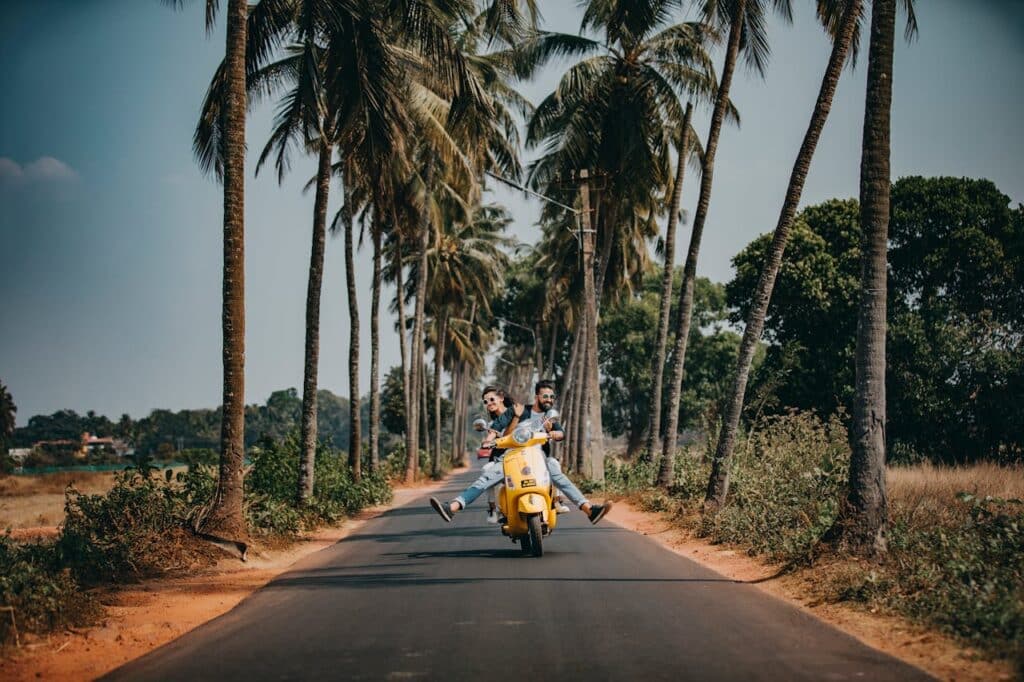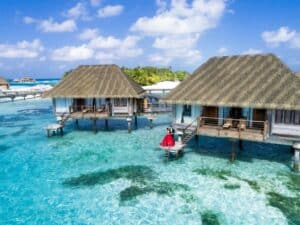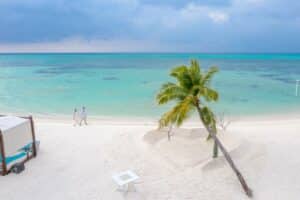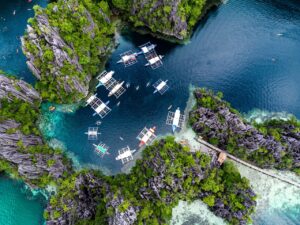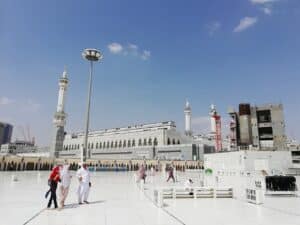Goa, an attractive state located on the southwestern shore of India, consists of a landmass district and an offshore island in the Arabian Sea. Located approximately 250 miles (400 kilometers) south of Mumbai, it is bordered by Maharashtra to the north and Karnataka to the eastern and southern. Goa, one of India’s smallest states, boasts a rich social heritage and spectacular beaches.
The state’s funding is Panaji (Panjim), located on the north-central coast of the mainland area. Once a Portuguese nest, Goa came to be a component of India in 1962 and accomplished statehood in 1987. Treating a location of 1,429 square miles (3,702 square kilometers), Goa is known for its lively culture, beautiful landscapes, and sandy coasts.
As of the 2011 demographics, the population of Goa was 1,457,723. In this extensive guide, we’ll take you via the very best areas to see and the most exciting points to do in Goa in 2023. Prepare for an unforgettable trip.
Land
The mainland of Goa covers 65 miles (105 km) and is characterized by sandy coastlines, tidewaters, and promontories. Relocating inland, the landscape shifts right into low, forested plateaus that mix with the wooded slopes of the Western Ghats, getting to elevations of virtually 4,000 feet (1,220 meters) on the state’s eastern border. Goa is intersected by two significant rivers, the Mandavi and the Zuari, with the island of Goa (Ilhas) located between their tidewaters. This island handles a triangular form, with a rough headland, known as the cape, developing the peak. This headland separates the harbor of Goa into two distinctive anchorages .
Climate
Goa experiences a consistent climate, characterized by heats normally varying in the 80s F (30s C) and low temperature levels in the 70s F (20s C) year-round. From June to September, the area encounters a southwest downpour, bringing considerable rains. The state obtains an ordinary annual rainfall of approximately 115 inches (3,000 mm), with the majority of it taking place throughout the gale months.
People !!
Population composition

Goa’s distinctive social material has been woven from its Portuguese colonial legacy and the varied neighborhood people. The population is primarily a blend of Christians and Hindus: along the western shore and estuaries, one discovers wayside crosses and Roman Catholic churches, whereas the uneven eastern region is adorned with Hindu holy places and temples.
In addition, Goa is home to a substantial Muslim community and smaller sized groups of Jains, Sikhs, and adherents of native beliefs. In the past, Portuguese acted as the language of management and the elite, leaving an enduring impact– several Goans bear Portuguese personal names and last names. However, in modern times, a lot of Goans communicate in Konkani, Marathi, or English.
Settlement patterns and group patterns
Old Goa, located on the Goa island, was the bustling heart of the area. However, in the 18th century, the city experienced extreme devastation because of battle and condition, leaving primarily ruins. Despite its decrease, initiatives have actually been in progress since the mid-20th century to protect the historic significance of Old Goa.
Noticeable among its landmarks are the Basilica of Bom Jesus, real estate, the burial place of St. Francis Xavier, and the Se Cathedral, committed to St. Catherine of Alexandria. Both structures, dating back to the 16th century, along with several other churches in Goa, gained the prominent UNESCO World Heritage site classification in 1986.
In contemporary Goa, there are three crucial cities
Panaji (also called Panjim), Marmagao (Mormugão), and Madgaon (Margão). Panaji, initially a suburban area of Old Goa, is positioned on the left financial institution of the Mandavi tidewater, matching the format of its parent city. It has actually developed right into a busy port city, real estate substantial sites such as the archbishop’s royal residence, the federal government house, and vivid markets.
Marmagao, protected by a headland and equipped with a breakwater and quay, stands as a significant port in between Mumbai and Kozhikode (Calicut) in the state of Kerala. Concentrating on the shipment of iron ore and manganese, Marmagao has played a crucial duty in Goa’s industrial landscape. As Marmagao grew, so did the surrounding Madgaon, which boasts an industrial estate, cold-storage centers, and a sizable produce market, contributing to the region’s financial growth.
Economy!!
Agriculture, forestry, and angling
Agriculture remains to play an essential duty in Goa’s economic situation, with key crops consisting of rice, fruits like mangoes, coconuts, beans, cashews, betel (areca nut), and sugarcane. Additionally, the state relies upon woodland sources such as teak wood and bamboo. Goa’s coastal area sustains a growing fisheries industry; however, concerns regarding sustainability have emerged in the 21st century. Regardless of these challenges, Goa exports a selection of its agricultural items, contributing to its financial activities.
Resources
Goa possesses plentiful mineral sources. Mining procedures started in the mid-20th century, quickly coming to be a foundation of the state’s economy. Iron ore, manganese, and bauxite stand out as the industry’s key products. Nevertheless, open-cast mining’s harmful ecological results have actually sparked intense arguments and caused routine government-imposed production stops, particularly given that the late 20th century. Regardless of the execution of new environmental laws in the early 21st century, mining stays a contentious and delicate concern in Goa.
Manufacturing
From the latter half of the 20th century onward, government policies and motivations have driven Goa’s speedy industrial development, significantly with the establishment of many industrial estates. Significant markets include fertilizers, chemicals, pharmaceuticals, iron products, and refined sugar. In addition, the state flaunts medium- and small business, including traditional handicrafts. Goa’s manufactured items find markets both within the nation and worldwide, adding considerably to its financial landscape.
Services
Because in the latter part of the 20th century, Goa’s service market has actually observed a noteworthy rise in value, largely due to the quick expansion of the tourism industry. By the very early 21st century, tourism had actually become a substantial component of Goa’s economy, attracting a considerable increase of both international and domestic visitors tempted by the state’s comprehensive sandy coastlines, seaside plant, coconut palm groves, and unique hotels. Nonetheless, the growth in tourism has sparked concerns regarding the preservation of the area’s native environment.
Transportation
Goa boasts substantial connectivity to the rest of India and the globe with roadway, rail, sea, and air routes. In Panaji, a significant bus terminal is easily located next to the Konkan railway terminal.
The Konkan railway, operational because 1998, stretches along India’s western coastline from west-central Maharashtra to southerly Karnataka, where it perfectly incorporates the country’s southern railway network.
Furthermore, one more train line links Goa’s primary port at Mormugao, going through Madgaon, to the southwestern rail system by means of Castle Rock in the Western Ghats, Karnataka. For worldwide traveling, there is a well-appointed airport located in Dabolim, near Panaji.
Please contact us for Visa assistance.
Government and Society
Constitutional Structure
Goa’s governmental structure, similar to the majority of Indian states, sticks to the nationwide constitution established in 1950. The guv, assigned by the President of India, offers a five-year term. Helping the guv is the Council of Ministers, led by a chief minister, and is liable to the chosen Legislative Assembly (Vidhan Sabha).
Education Goa boasts a diverse variety of educational and training establishments, encompassing primary schools to technical and college facilities. Amongst these, Goa University, founded in 1985, stands apart as one of India’s premier postsecondary institutions. Positioned in Bambolim, near Panaji, it works as a center for college.
Additionally, the National Institute of Oceanography, developed in 1966, is renowned for its oceanographic research and Antarctic explorations. It lies in Dona Paula, on the western tip of Goa Island.
Conclusion
In closing, as you prepare for your Goa escapade in 2023, bear in mind that Goa transcends its sensational beaches. It’s a location where society, history, adventure, and calmness effortlessly link, developing an unified tapestry of experiences. Whatever your enthusiasm might be, Goa promises to capture your heart and craft long-lasting memories. So, collect your belongings and brace on your own for an expedition of this captivating coastal place. Goa eagerly awaits your arrival!
Please contact us for Visa assistance.



